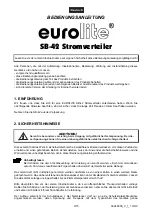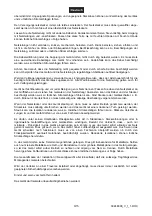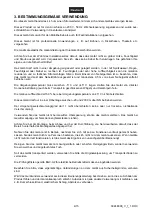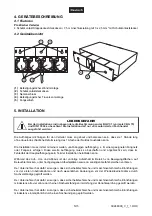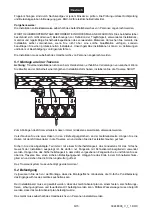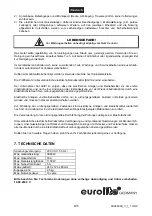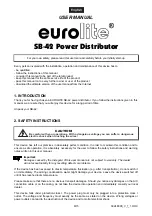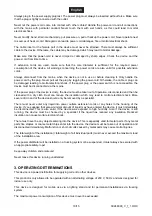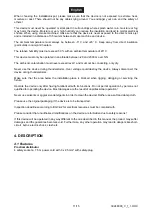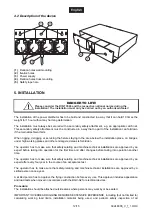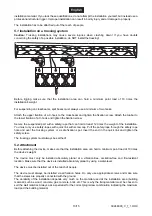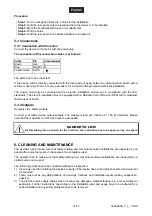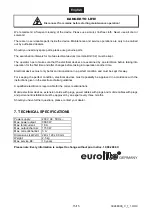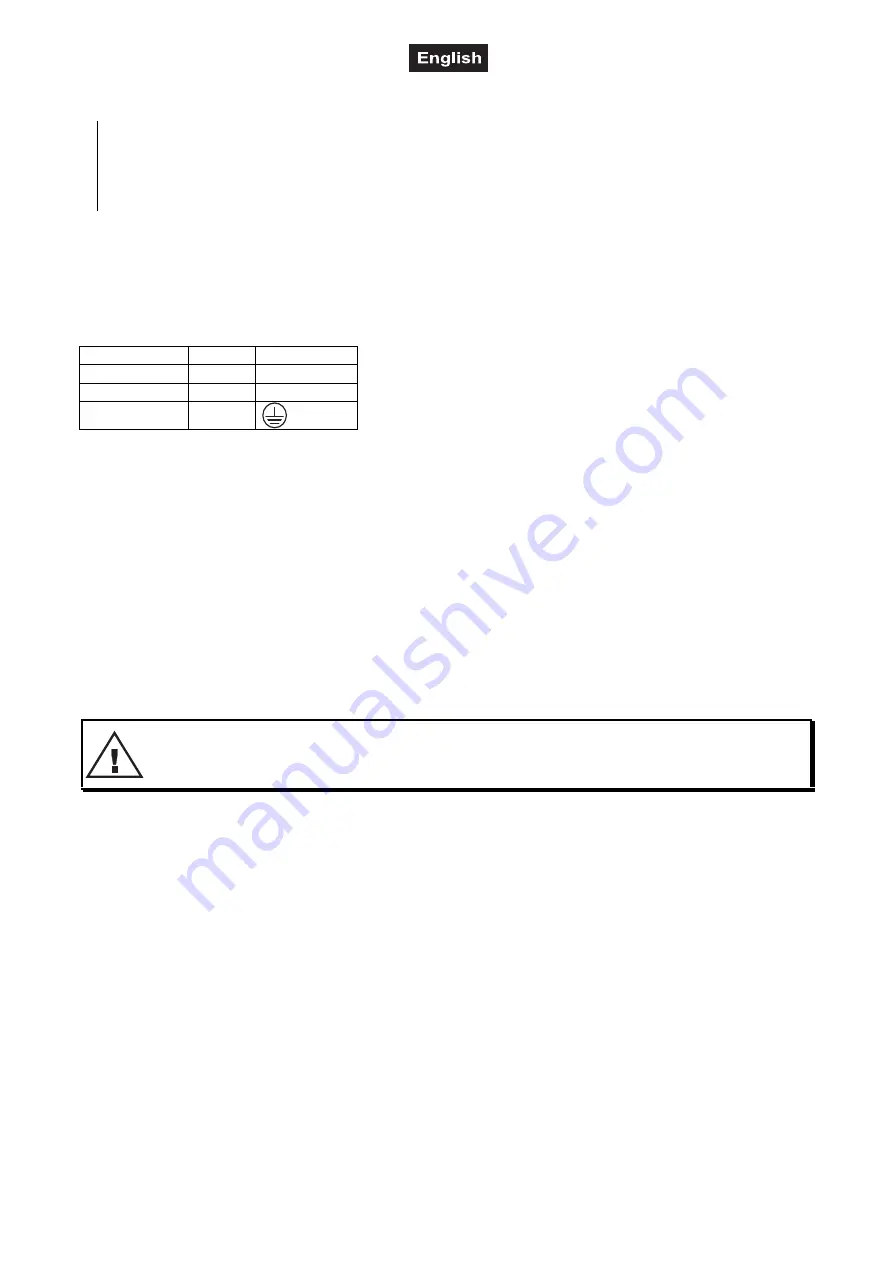
30248000_V_1_1.DOC
14/15
Procedure:
Step 1:
On the rear panel, there are 2 holes for the installation.
Step 2:
Hold the rear panel onto the location where the device is to be installed.
Step 3:
Mark the boreholes with a pen or a suitable tool.
Step 4:
Drill the holes.
Step 5:
Hold the rear panel in the desired position and tighten it.
5.3 Connections
5.3.1 Connection with the mains
Connect the device to the mains with the power-plug.
The occupation of the connection-cables is as follows:
Cable
Pin
International
Brown
Live
L
Blue
Neutral
N
Yellow/Green
Earth
The earth has to be connected!
If the device will be directly connected with the local power supply network, a disconnection switch with a
minimum opening of 3 mm at every pole has to be included in the permanent electrical installation.
The device must only be connected with an electric installation carried out in compliance with the IEC-
standards. The electric installation must be equipped with a Residual Current Device (RCD) with a maximum
fault current of 30 mA.
5.3.2 Outputs
Output is via 4 safety sockets.
Connect your loads via the output-sockets. The maximum load per channel is 1,150 W (resistive). Please
note that the maximum current must never be exceeded.
DANGER TO LIFE!
Before taking into operation for the first time, the installation has to be approved by an expert!
6. CLEANING AND MAINTENANCE
The operator has to make sure that safety-relating and machine-technical installations are inspected by an
expert after every four years in the course of an acceptance test.
The operator has to make sure that safety-relating and machine-technical installations are inspected by a
skilled person once a year.
The following points have to be considered during the inspection:
1) All screws used for installing the devices or parts of the device have to be tighly connected and must not
be corroded.
2) There must not be any deformations on housings, fixations and installation spots (ceiling, suspension,
trussing).
3) The electric power supply cables must not show any damages, material fatigue (e.g. porous cables) or
sediments. Further instructions depending on the installation spot and usage have to be adhered by a
skilled installer and any safety problems have to be removed.


